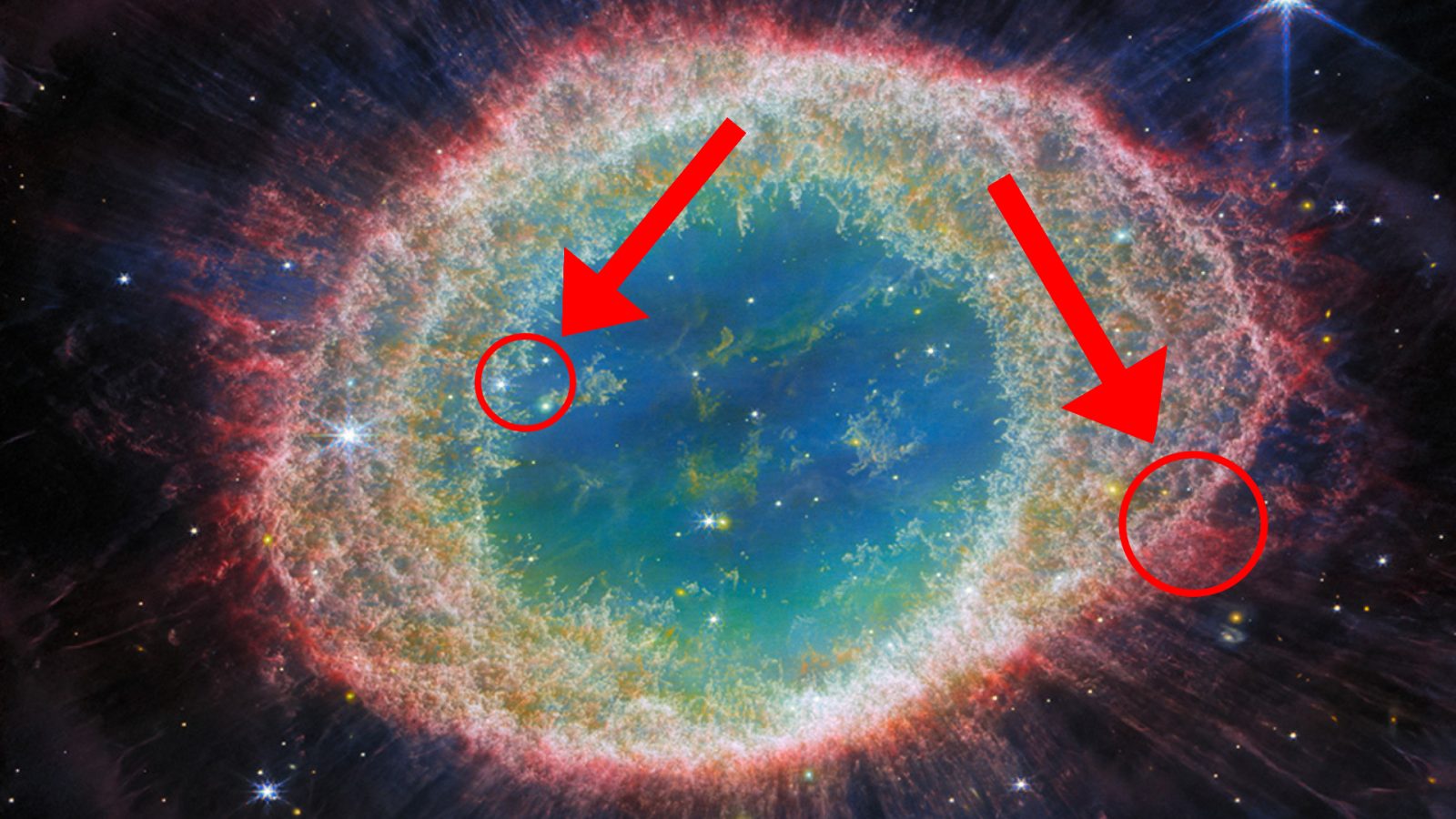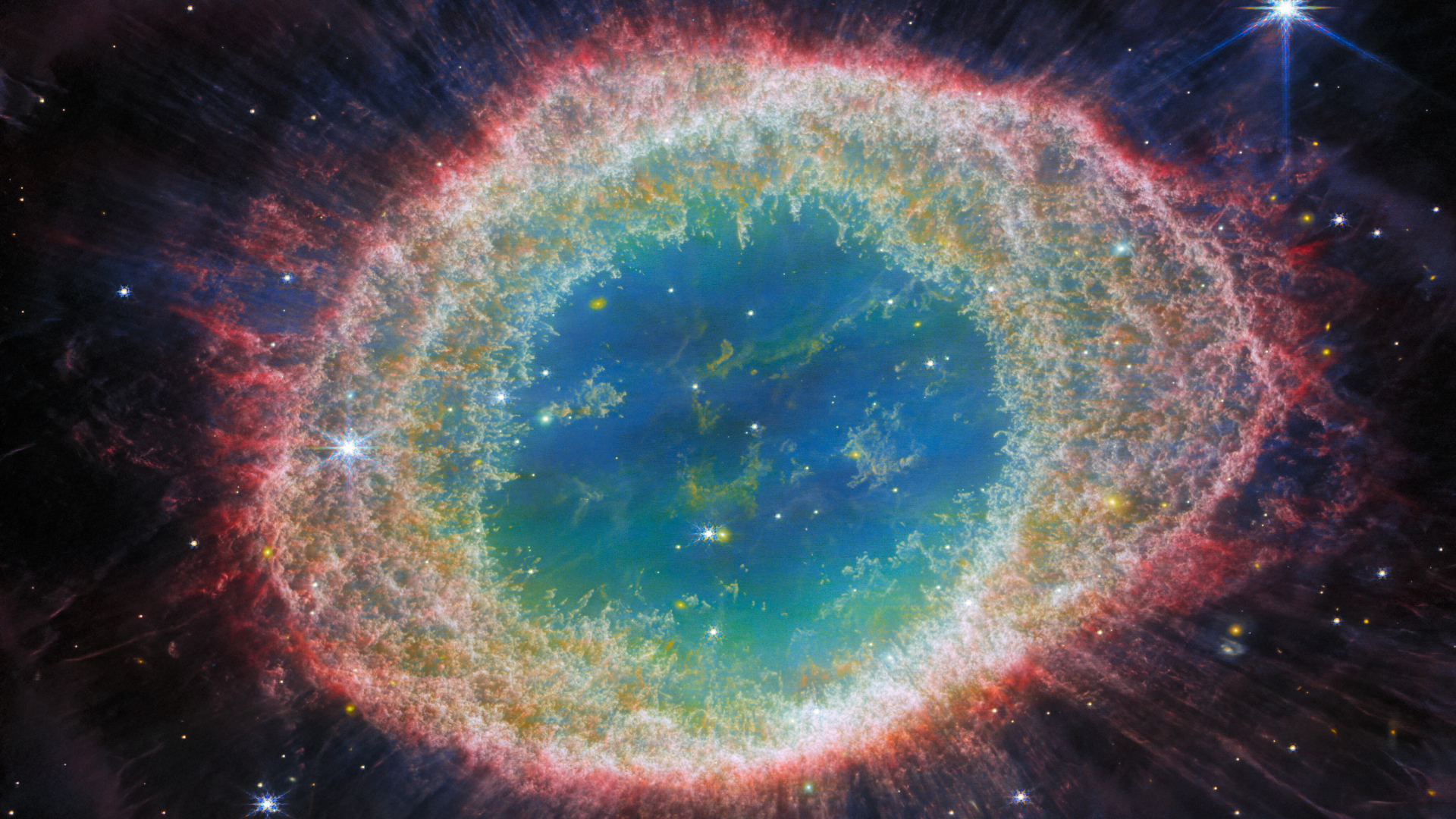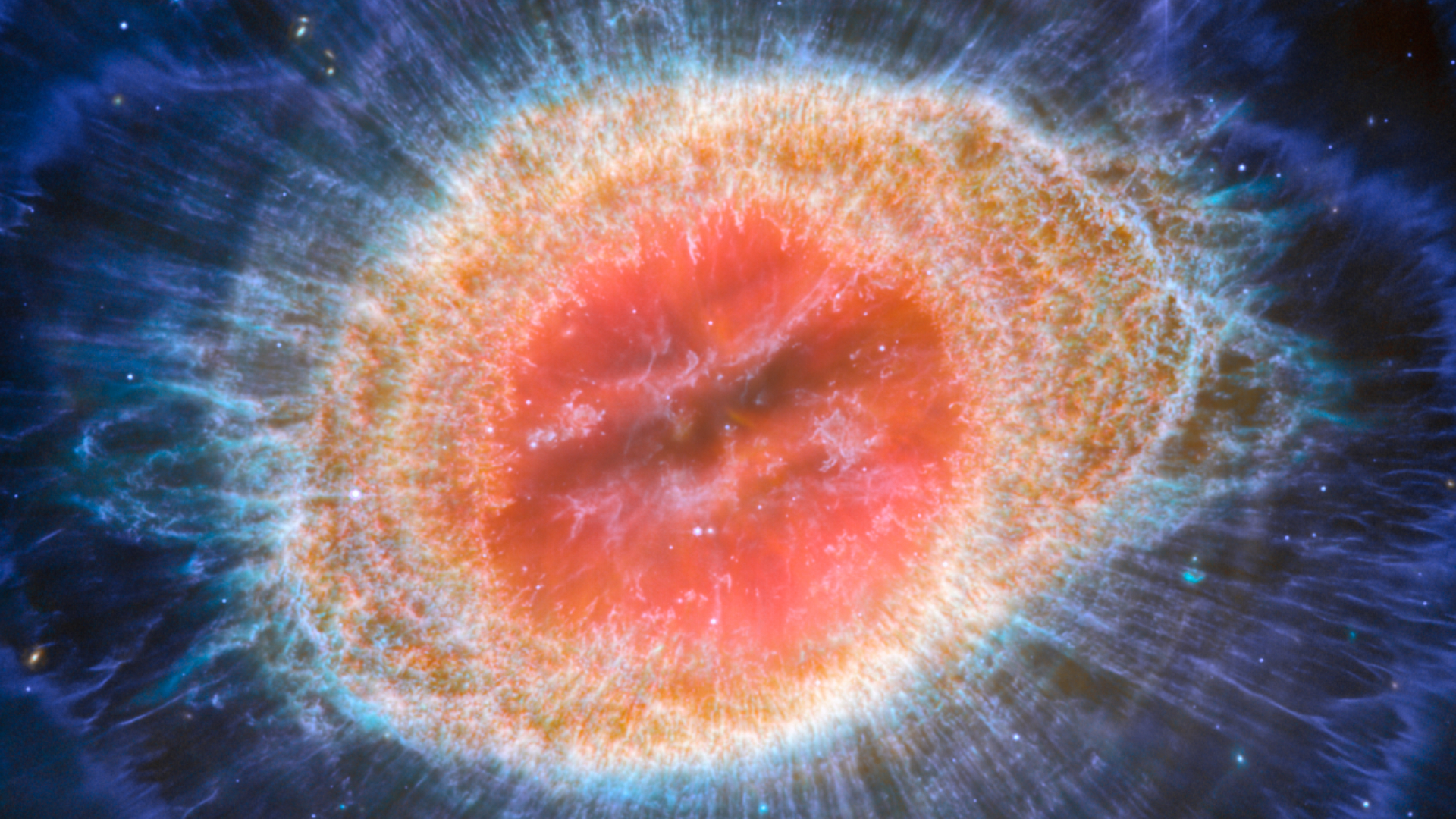
Fresh off the back of a detailed capture earlier this month, NASA’s James Webb Space Telescope (JWST) has released yet two more images of the famous Ring Nebula. Each reveals surprising new details about the intricate structures of the final stages of the dying star. Let’s take a look…
The Ring Nebula is approximately 2,300 light-years away from Earth, making it visible with a telescope or even a pair of binoculars in excellent viewing conditions. Its distinct look, strikingly resembling an eye, has made it a popular target for astrophotographers and astronomers.
This particular nebula is believed to be the result of a star similar in mass to the Sun reaching the final stages of its evolution. As the central star exhausts its nuclear fuel, it throws out its outer layers of ionized gas and dust, creating the stunning structure we see today.
New Ring Nebula images
The first image (left), was captured using the JWST’s Near Infrared Camera (NIRCam). A special instrument designed to capture images in the near-infrared range of the electromagnetic spectrum. NIRCam is an integral part of the telescope, allowing it to observe a wide range of celestial objects, including galaxies, stars, planets, and nebulae, with high sensitivity and resolution.
The second image was captured using the Mid Infrared Instrument (MIRI) and reveals the sharpest and clearest view yet of the faint molecular halo outside the bright ring.


Credit: ESA/Webb/NASA
What we’ve learned
Researchers are still studying these images as you’re reading this, but according to NASA, there are a few surprising new details.
For the NIRCam image, the space agency stated on Monday:
This new image from Webb’s NIRCam (Near-Infrared Camera) shows intricate details of the filament structure of the inner ring. There are some 20,000 dense globules in the nebula, which are rich in molecular hydrogen. In contrast, the inner region shows very hot gas. The main shell contains a thin ring of enhanced emission from carbon-based molecules known as polycyclic aromatic hydrocarbons (PAHs).
At one time, it was believed that planetary nebulae were simple, round objects with a single dying star at the center. Modern observations are beginning to paint a completely different picture showing the vast complexities that exist.
In regards to the second image from the James Webb Space Telescope of the Ring Nebula captured by the MIRI, NASA stated:
This new image of the Ring Nebula from Webb’s MIRI (Mid-InfraRed Instrument) reveals particular details in the concentric features in the outer regions of the nebulae’s ring. Roughly ten concentric arcs located just beyond the outer edge of the main ring. The arcs are thought to originate from the interaction of the central star with a low-mass companion orbiting at a distance comparable to that between the Earth and Pluto.
The release of these stunning images is expected to spark renewed interest in the James Webb Space Telescope’s mission and its potential to revolutionize our understanding of the cosmos. As the telescope continues its observations, astronomers eagerly anticipate uncovering more of what space has to offer.
Looking for a decent telescope to spot nebulae like this? I’d highly recommend looking at these Celestron telescope options.
Related stories:
- Hubble space telescope captures strange image of ‘ghostly’ galaxy
- Mysterious ‘question mark’ object seen by NASA’s James Webb Space Telescope
- NASA detects signal from Voyager 2 after losing contact in deep space
FTC: We use income earning auto affiliate links. More.



Comments